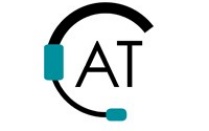Measurement of inductance and capacitance
Competency Group: Electrical Engineering
Type: Design, Modeling and prototyping Hardware
Description: Capacitive and inductive loads oppose the flow of alternating currents. This opposition is expressed as impedance at a given frequency. The effect of a real-world impedance load is observed as an attenuation of the signal and a phase shift. Because of the nature of the impedance, it is denoted as a vector whose angle is the same as the phase angle between voltage and current, and the magnitude of the impedance is the same as the quotient between the voltage and current magnitudes. E.g. Probes are used to measure the relative inductance/capacitance of a circuit.
Citation for Description: National Instruments. (2011). Capacitance/ Inductance Measurements. Retrieved from http://www.ni.com/white-paper/3078/en
Units: Henries, Farads
Advantages: The frequency of operation of a device (say mains frequency) will have a frequency dependent load, which must be measured in terms of magnitude and phase.
Limitations: Can involve the use of an oscilloscope which can be quite expensive.
Regulations: IEEE Standards Organization. (2012). Retrieved from http://standards.ieee.org/
Target Audience: Engineering
Relevant to Universal Design: No
Stages and Steps: 2.2, 5, 6
Free Resource: Calculatoredge. (n.d). L-C Resonance Calculator. Retrieved from http://www.calculatoredge.com/new/resonance.htm
Purchase Resource: Rawlins, J.C., & Fulton, S.R. (2000). Basic AC Circuits. Woburn, MA: Butterworth-Heinemann.
